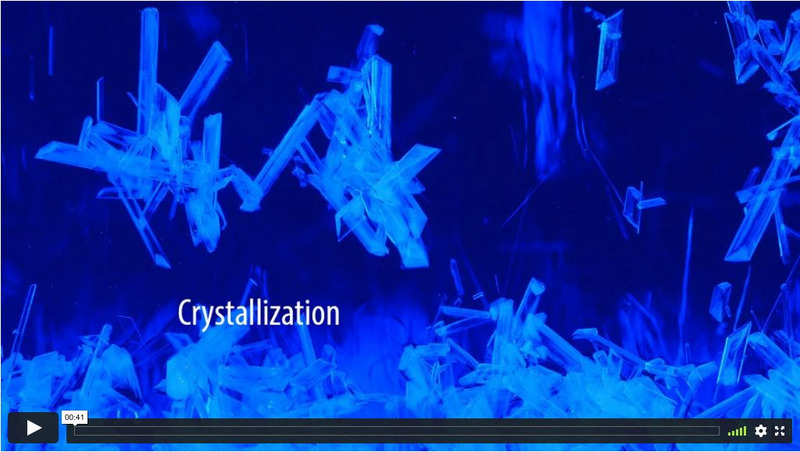Professor Dave Explains
Cleavage of Carbon-Carbon Bonds With Periodic Acid
Just as important as learning reactions that generate carbon-carbon bonds, we need ways to cleave carbon-carbon bonds as well.This is useful for splitting a molecule up into fragments, or transforming a cyclic molecule into a linear...
Professor Dave Explains
Fischer Esterification and Saponification
How do we go from carboxylic acids to esters? Fischer esterification! How do we go from esters to carboxylic acids? Saponification! Let's get a closer look at these complementary processes now.
Professor Dave Explains
Protein Structure
Everyone has heard of proteins. What are they on the molecular level? They're polymers of amino acids, of course. They make up most of your body, so we have to understand their structure very well! Check this out to learn the hierarchy...
FuseSchool
Properties Of Water
Learn the basics about Properties of water. What are the properties of water? What is water made of? Find out more in this video!
FuseSchool
What is Brownian motion?
Learn the basics about what is the Brownian motion? what is it used for? Find out more in this video!
Mazz Media
Element
This live-action video program is about the word element. The program is designed to reinforce and support a student's comprehension and retention of the word element through use of video footage, photographs, diagrams and colorful,...
FuseSchool
How Does Water Bond - Covalent Bonds
Learn the basics about the covalent bonding of water, when learning about covalent bonding within properties of matter. Water is made from one oxygen atom and two hydrogens. The oxygen has 6 electrons in its outer shell, but it really...
Getty Images
Animation of small group of rotating ice molecules
Animation of small group of rotating ice molecules
Getty Images
Hydrogen reacting with oxygen to form water with subsequent burst of electrons in a flash of energy - renewable energy
Hydrogen reacting with oxygen to form water with subsequent burst of electrons in a flash of energy - renewable energy
National Science Foundation
Science of the Winter Olympic Games: Science of Ice
Chemistry concepts come alive against the backdrop of the Sochi Olympic Winter Games! Here is a captivating clip to share with your chemistry kids. It teaches how the bonds in a water molecule contribute to the formation of a...
Curated OER
Sub Zero Science
Spangler invites a teacher in for this segment. She has developed some amazing demonstrations which use liquid nitrogen for elementary schoolers. She drops inflated balloons into a bowl of liquid nitrogen and the results are quite...
Steve Spangler Science
Traveling Water - Sick Science! #026
Transfer water from one cup to another without touching it. The amazing properties of water make this wonder occur! Have your young earth scientists conduct this experiment when learning about adhesion, cohesion, and water molecule...
Steve Spangler Science
Sub-Zero Science - Julie Gintzler
Spangler invites a teacher in for this segment. She has developed some amazing demonstrations which use liquid nitrogen for elementary schoolers. She drops inflated balloons into a bowl of liquid nitrogen and the results are quite...
PBS
Pbs Learning Media: What Is a Molecule?
This video/animation shows that a molecule of water is made up of oxygen and hydrogen atoms. When oxygen and hydrogen atoms exist alone, their properties are different from the properties they have when they are chemically combined to...
Khan Academy
Khan Academy: Capillary Action and Why We See a Meniscus
See how capillary action and the meniscus are related to intermolecular forces in water. [8:26]
Beautiful Chemistry
Vimeo: Beautiful Chemistry: Beautiful Reactions: Crystallization
Crystals are beautiful, both externally at the macroscopic level and internally at the atomic level. The same is true for the process of crystallization, which is the formation and growth of crystals. This video shows the crystallization...
Crash Course
Crash Course Chemistry #23: Polar & Non Polar Molecules
A crash course in molecular symmetry and electronegativity with information about about polar and nonpolar molecules.
Sophia Learning
Sophia: Cohesion and Adhesion
In this narrated lesson, learn about the properties of cohesion and adhesion in liquid water. [2:40]
The Kid Should See This
Tksst: The Ring of Truth: Two Hydrogen Atoms & One Oxygen Atom
Watch as two units of hydrogen are combined with two units of oxygen over and over again. [2:53]
Khan Academy
Khan Academy: Bronsted Lowry Definition of Acids and Bases
This Khan video explains the Bronsted-Lowry definition of acids and bases and conjugate acids and bases. [8:56]











